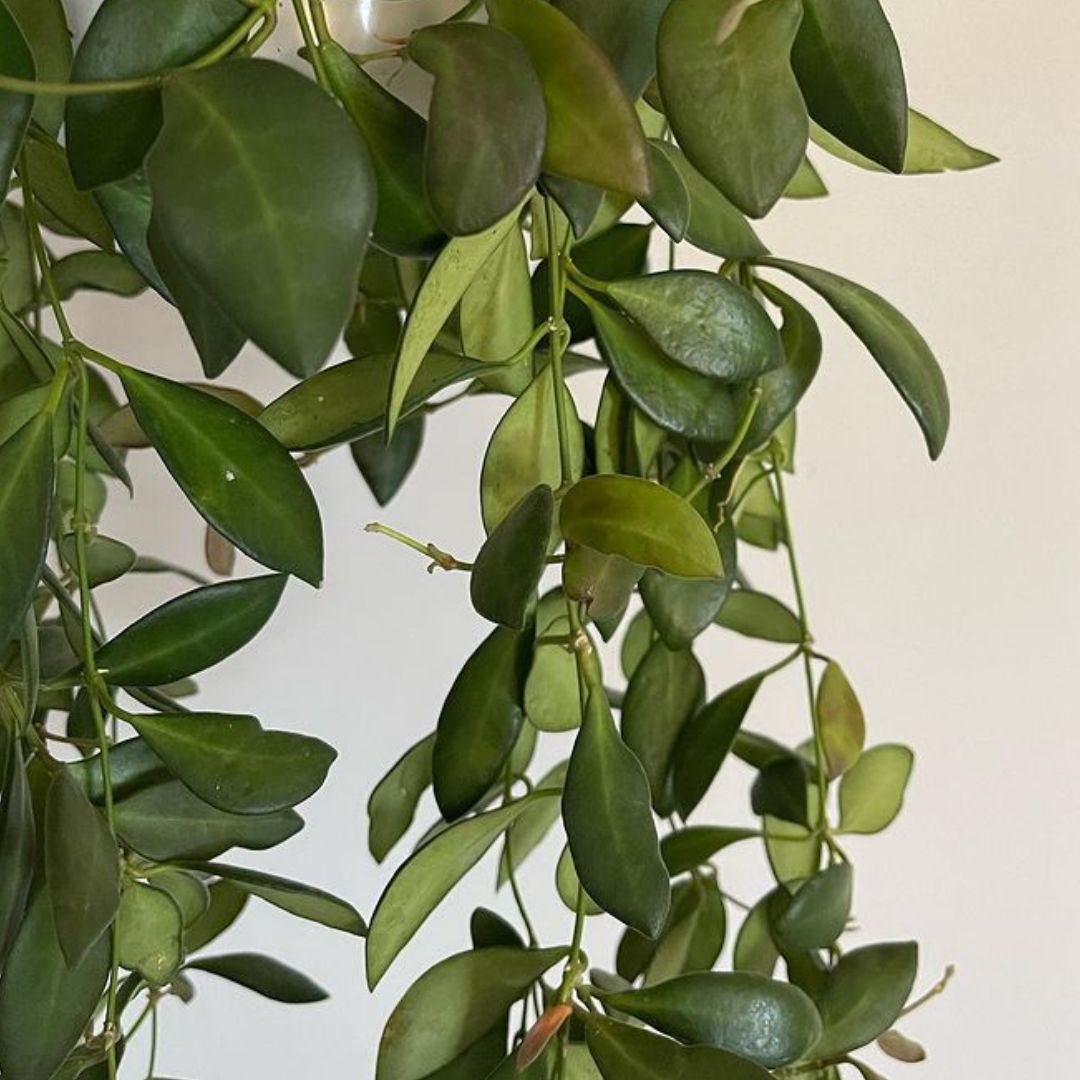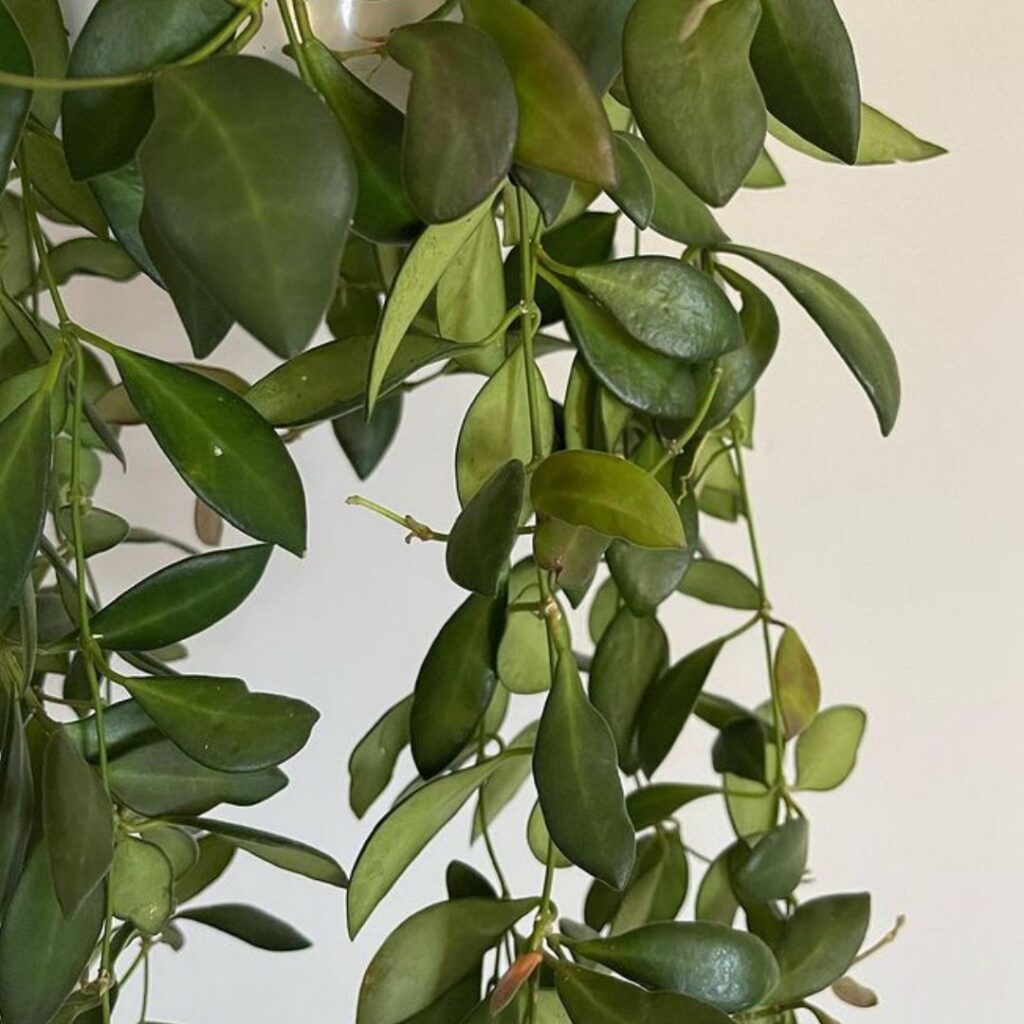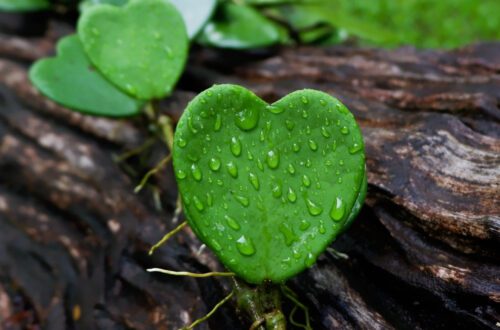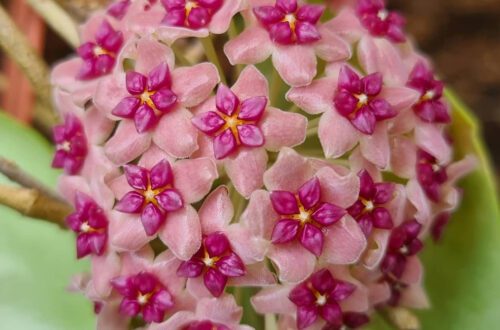
Hoya Burtoniae
Long, thick, pointed, dark green leaves with slightly darkened tips make the Hoya Burtoniae a striking hanging plant, we cover all you need to know about care and propagation…
Hoya Burtoniae Care Summary
| Light needs: | Bright indirect sunlight. |
| Watering needs: | Check the soil once a week and water it only if dry all the way down. |
| Fertilizer: | Feed once a month in the spring and summer with a diluted balanced feed. |
| Soil: | Well-draining and airy. |
| Humidity: | 50-70%. |
| Temperature: | 15-35°C (59-95°F). |
| Where to buy: | Try our list of Rare Plant Shops. |
| Common issues: | Overwatering and root rot. |
Introduction
The Hoya Burtoniae is native to the Philippines and is a vining epiphyte. It is the perfect plant for a hanging pot which will allow the pretty leaves to drape downwards. This is a plant that is harder to find, but is becoming more popular. The leaves are slightly furry and darker around the edges. So many people love Hoyas for their unique flowers and the Burtoniae also shares this beautiful characteristic. The flowers on this plant are bright red with yellow in the center. They are rounded and almost look like berries. The blooms are fragrant.
See also: Hoya Soil, Hoya Lacunosa, Hoya Curtisii, Hoya Compacta Care, Hoya Callistophylla Care, Hoya Chelsea, Hoya Curtisii, Hoya Sunrise.
Tip: we recommend Etsy for buying plants. Look for the best rated seller you can, and try to buy as close to your home as possible so the plant does not travel too far.
A note about affiliate links: when you buy a plant, pots, soil, or other goods through links on this article we sometimes earn a commission. It doesn’t cost you anything, but it really helps us out if you do use them. Thanks a lot! An example of this is if you buy a plant on Etsy using this link. Read our privacy policy for more information. Thanks again.
Hoya Burtoniae Light Needs
The Hoya Burtoniae needs bright, indirect light for around 8 hours a day. If your Hoya receives direct sunlight for a few hours a day, it may turn slightly red which is what is called sun-stressed. Many people will sun-stress on purpose because they enjoy this look. Sun-stressing your Hoya won’t harm it. However, don’t over do it as this can leave your leaves discolored or scorched. If you keep your Hoya Buroniae next to a southern window, place it farther away or make sure that there is a sheer curtain to filter the light.
How Often To Water
This is not a plant that requires too much water, but be sure that it does not stay completely dried out for a long period of time. Due to its thick, water-retaining leaves, it is a drought-tolerant plant. This is a plant in which you need to worry about overwatering much more compared to underwatering. This plant is an epiphyte so it has a smaller root system that needs to breathe. Check the soil once a week and water it only if dry all the way down.
Fertilizer
This Hoya does not need a lot of fertilizer, but will grow faster with larger leaves if you do provide it. So, once a month in the spring and summer with a diluted fertilizer will work well. You can use a general houseplant fertilizer or one that is well-balanced. If you do see blooms forming, you can give your plant a boost with a fertilizer high in phosphorus.
Soil
Since this plant reacts badly to being exposed to too much water, the soil needs to be well-draining and airy. The soil just needs to hold onto a bit of water to ensure your plant can drink it up when it needs it. You’ll know the potting mix you prepare is great for your plant if the leaves grow larger and show no signs of ailment. Likewise, your plant will tell you if it is unhappy through discoloration on the leaves and wilting. See our guide to hoya soil here: Hoya Soil.
Tip: make sure you give them a soil mix suitable for epiphytes that has plenty of orchid bark, as they hate to sit in heavy wet soil and will get root rot easily. Remember that they grow on tree bark in the wild and not in soil. For more info see our guide: Hoya Soil.
When to Repot
Repot your Hoya only when the roots have begun to climb outside of the pot via the drainage hole. The Hoya Burtoniae is a vining plant and if you notice the leaves at the end of the vine growing smaller, it is a good time to repot. This time frame is generally around 2 years. Choose a new pot that is 2 inches (5 cm) larger.
Hoya Burtoniae Humidity
Since the Buroniae is native to the Philippines, it loves some humidity. The best range for this plant is between 50 and 70%, and it will still be happy in higher levels too. However, keep in mind that extremely high humidity can result in diseases or fungus. Even though this plant will prefer higher humidity levels, the thick leaves are resilient and will forgive you if it is kept in regular household humidity. If you do have very low humidity in your house, keep an eye out for browning or crispy edges. If this occurs, supplement humidity with a humidifier or a pebble tray.
Temperature
This Hoya is tolerant of a fairly wide temperature range. The best range for this plant is from15-35°C (59-95°F). If it is kept at above or below this range, it will suffer.
How to Propagate Hoya Burtoniae
The best way to propagate Hoya Burtoniae is by taking stem cuttings. This is the easiest, fastest way. Simply take a cutting of the stem that is around 5 inches (12.7 cm) long. You can remove the lower leaves on this cutting and place this cutting in a container making sure that all the nodes are under water. You’ll soon see roots growing from the areas where the leaves used to be!
Be patient with propagating your burtoniae as they can take time to root.
Hoya Burtoniae Flower
They flower with round, berry/like burgundy flowers.
Hoya Burtoniae Vs Ds-70
Both these hoyas have rounded berry-like flowers, but the DS-70 are darker and they have yellow dots on them.
Hoya Burtoniae USDA Zone
They can live outdoors in zones 10-12.
Hoya Burtoniae Vs Rosita
You can tell the difference between these two plants as the rosita has much more elongated leaves. The burtoniae has shorter leaves.
Where To Buy
Try our list of Rare Plant Shops.
FAQ’s
- Some people online have reported that the blooms on the Hoya Burtoniae smell exactly like movie theater popcorn, butterscotch, or caramel.
- Hoyas can take a few years to mature before they will flower.
Are They Toxic to Pets?
The Hoya Burtoniae is not toxic to pets or humans, but the sap can cause skin irritation to those who have more sensitive skin or allergies. It is best to wear gloves when taking cuttings to avoid any potential issues.
Hoya Burtoniae Sun Stress
You can sun stress your hoya to bring out a reddish hue to the leaves. Be really careful as if you overdo it slightly you can burn the leaves. Give it some early morning direct sun and then keep increasing its exposure gradually each day. Make sure you keep an eye on the soil too and give the plant a water if needed as it can burn if it dries out. You should see that color come through, but be patient as you don’t want a burnt plant.
Hoya Burtoniae Common Pests, Issues, and Treatments
The most common pests for this Hoya are mealybugs, spider mites, thrips, and scale. Mealybugs love the thick, juicy foliage of the Hoya especially. If you see any of these insects, be sure to remove them immediately either by hand, a q-tip dipped in rubbing alcohol, or by spraying down the entire plant with a natural insecticide or diluted neem oil solution. It may take a few repeat treatments to ensure all pests are eradicated.
Other Articles You Might Like
There you have it, here ends our guide to this beautiful plant. You might also like our other articles:
Hoya Soil, Hoya Lacunosa, Hoya Curtisii, Hoya Compacta Care.
Please follow us on Instagram and Pinterest for regular plant updates and occasional plant giveaways.





